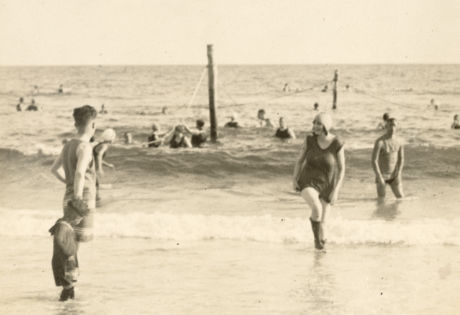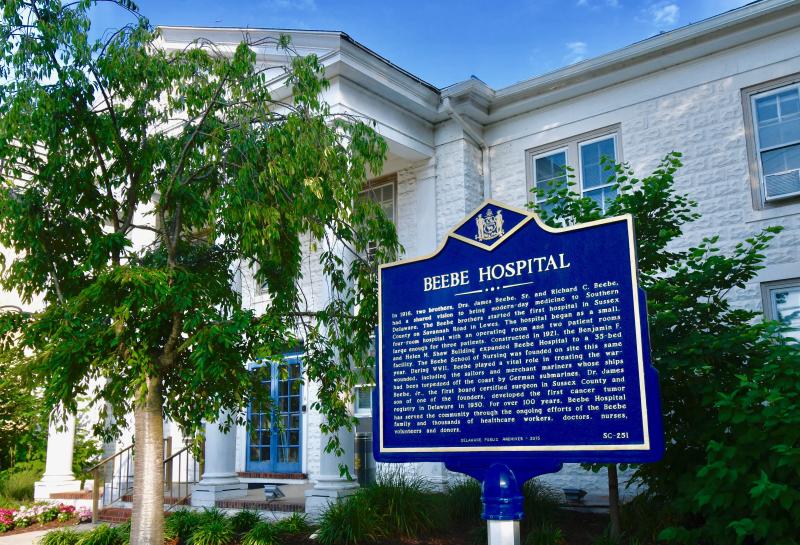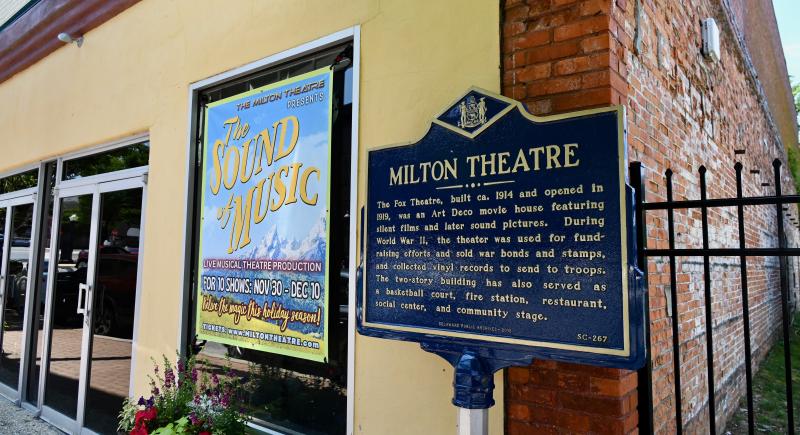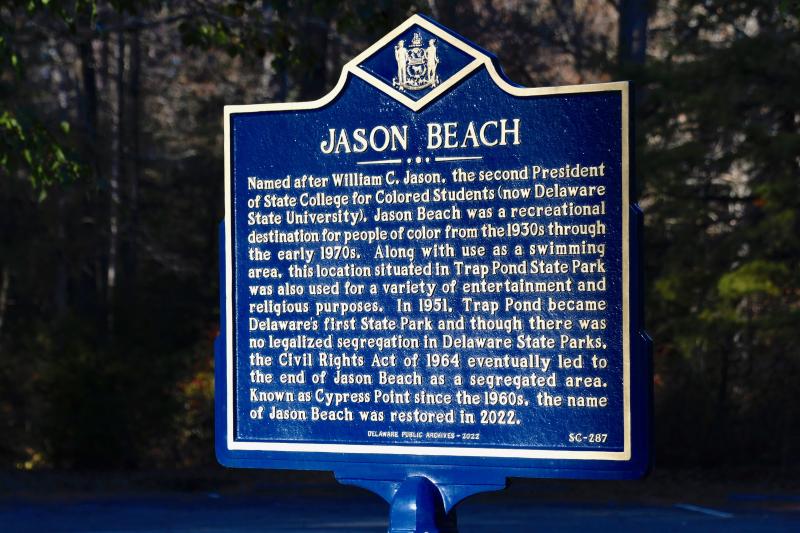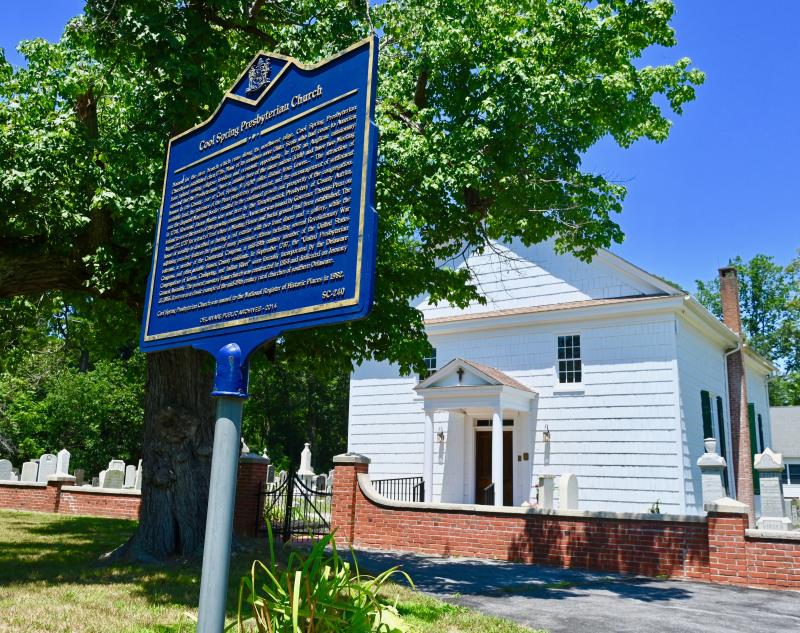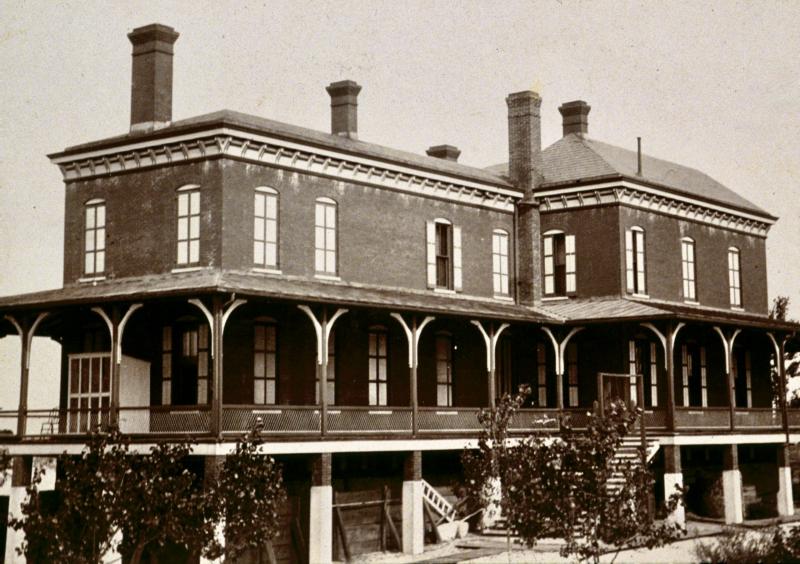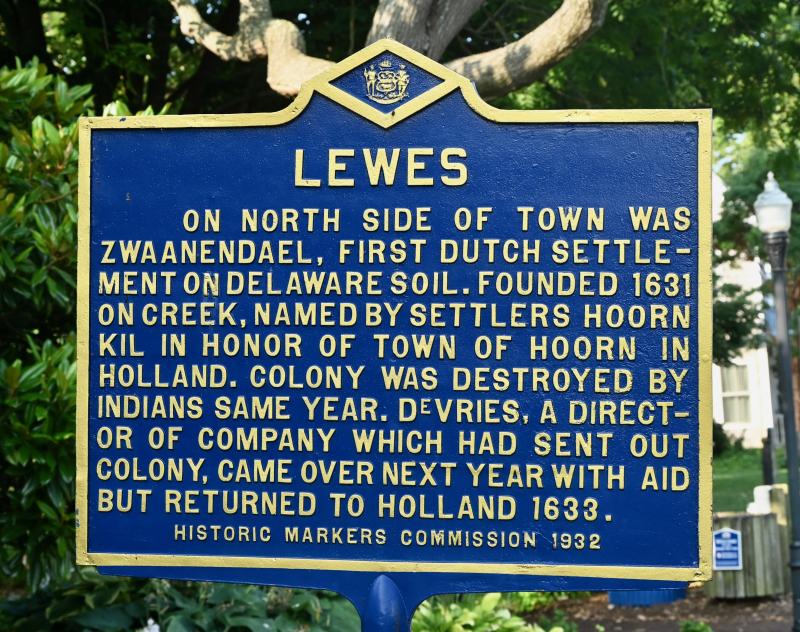Historical markers: A window to the past

Chances are if you are out and about in Sussex County, you drive by several Delaware Public Archives historical markers and are not even aware you are doing it.
But they are out there. The markers signify a broad slice of Sussex history, from the only documented remaining slave quarters at the Ross Mansion in Seaford to the Rosedale Beach Hotel and Resort in Oak Orchard, where many of the best rhythm and blues and Motown singers and bands performed from the early 1900s to the 1970s.
The markers also signify industries that helped to shape the county, including the holly industry in Milton and commercial activity on the Lewes-Rehoboth Canal.
The list of markers includes Revolutionary War heroes such as Lewes' Col. David Hall, five governors' markers in Milton, Bridgeville artist Jack Lewis and a marker highlighting the life of Ted Freeman, a 1948 Lewes High School graduate and one of the first NASA astronauts, who was killed in a tragic plane crash.
The markers serve as a way to capture bits of history in the county that most people are not aware of.
If you plan to go out on a marker hunt, it's best to check the Delaware Public Archives website first to get exact locations. I had trouble finding some markers and actually didn't find some that are listed. You can only surmise that the markers have been forgotten to time and were removed or fell into disrepair.
Program starts in 1931
The program started in 1931 when the General Assembly established a permanent commission to erect historical markers throughout the state.
The Delaware Public Archives took over the program in 1990. Markers are usually suggested by community members, groups or officials, and if selected, paid for by local legislators.
There is usually a public unveiling of the markers hosted by the Delaware Public Archives with legislators, state officials and people affiliated with the marker attending.
Since its inception, more than 660 markers have been placed throughout the state to honor towns, lighthouses, landmarks, industries, people, cemeteries, churches, historic buildings, lodges, fire departments and significant historic events. Funland in Rehoboth is the only amusement center to have a marker.
In Sussex County, there are more than 400 historical markers (more than 200 Delaware Public Archives markers) and war memorials. It comes as no surprise that Lewes and Georgetown, which both have served as county seats, have the most markers. But it’s surprising that Laurel also has a significant number due to the fact that most of the town is included on the National Register of Historic Places.
Surf safety line
One of the most interesting markers is located on the Boardwalk in Rehoboth Beach. The Surf Safety Line Marker is among the most recent markers, erected in 2022.
The surf safety line was a project funded by the women of the Village Improvement Association to assist bathers while they were in the ocean. In the early 20th century, women wore wool bathing suits that completely covered their bodies. When wet, the suits were heavy.
Surf safety lines were ropes that were anchored along the shore and attached to floating buoys in the ocean to assist bathers to pull themselves along the line to go out, then return safely to the shore.
The VIA has initiated four other historical markers, including the children’s fishing pier on Lake Gerar, Rehoboth Beach Public Library, the lighthouse at the traffic circle on Rehoboth Avenue, and the VIA Clubhouse.
Quarantine Station
Another unique marker is one for the Delaware Breakwater Quarantine Station, which is almost a forgotten chapter of the history of Lewes and what is now Cape Henlopen State Park. The station was established in 1885 along the Delaware Bay coastline three miles from downtown Lewes to process the growing number of immigrants and prevent infectious diseases from spreading.
The first station included a six-bed hospital and a surgeon's house.
Believe it or not, over a 40-year period, more than 200,000 immigrants were processed.
Ships entering the bay were required to anchor near the outer breakwater and raise a yellow flag if they were carrying immigrants. A boat with the surgeon would board the ship, and if no illness was found, the ship was sent on its way.
However, if an immigrant or crew member was sick, they were taken off the ship to the hospital. That meant the ship could not leave until the affected people were well. That created a lot of controversy because that could last from two to 12 weeks.
In the 1890s, the station was expanded to include separate areas for men and women, a sewer system, stable, bathhouse, laundry building, boat house, blacksmith shop, disinfecting building, graveyard and crematorium.
The station officially closed in 1926, and it was dismantled, leaving hardly any trace it ever existed.
Then there is a marker in Bethany Beach concerning the shipwreck of the Faithful Steward, an Irish ship bound for Philadelphia, which sank with 249 passengers aboard in stormy weather Sept. 1, 1785, about 100 yards offshore.
In all, 181 passengers perished, including 93 women and children. It didn't take long for looters to arrive at the shipwreck who took anything they could grab, including emptying the pockets of the deceased.
The ship was carrying 400 barrels of British halfpennies and guineas, and many were spilled into the ocean. That's how Coin Beach got its name, because every once in a while, beachcombers find an old coin.
The 40 & 8 Boxcar marker in Seaford is a restored World War II train car given to the people of the United States from France in appreciation for assistance during and after the war. The train cars were used to haul military cargo in France or haul 40 men and eight horses.
Another marker of note is in Ocean View at the former farm of Cecile Steele, who is credited as the pioneer who started the county's chicken broiler industry 100 years ago. One of her original chicken coops is on display at the Agricultural Museum in Dover.
There are still many landmarks, people and places that deserve a marker. Among those would be the Laurel Auction Block, Hopkins Farm near Lewes, the Nanticoke River in western Sussex and the former Seaford DuPont Nylon Plant, to name a few.
For more information, go to archives.delaware.gov/delaware-historical-markers.
The following site contains every marker in the county, including the Delaware Public Archives markers: hmdb.org/results.asp?Search=County&County=Sussex%20County&State=Delaware&Page=5.
